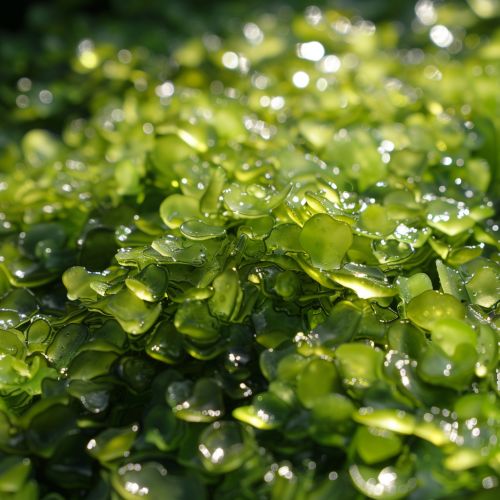Evolution of Plants
Origins of Plant Life
The evolution of plants has resulted in increasing levels of complexity, from the earliest algal mats, through bryophytes, lycopods, ferns to the complex gymnosperms and angiosperms of today. Plants in all of these groups continue to thrive, especially in the environments in which they evolved.
An interesting aspect of plant evolution is the appearance of real leaves and roots, and secondary growth. While the simple and primitive plants show none of these characteristics, more advanced plants exhibit some or all of them. The evolution of plants has been driven by adaptations to their environment; this adaptation process has often been driven by the amount of sunlight, the availability of water, and the concentration of carbon dioxide in the atmosphere.


Early Plant Life
The first plants evolved from early photosynthetic organisms in the ocean. These early plants were simple and lacked many of the structures that characterize most modern plants, such as roots, stems, and leaves. The first plants, which were likely similar to modern day algae, evolved from a group of green algae known as the Charophytes. This group of algae is still around today and shares many characteristics with plants, including chlorophyll-a and -b, cellulose in their cell walls, and the ability to store energy as starch.
Adaptations to Land
The transition from an aquatic to terrestrial life form required plants to solve certain problems. These included supporting the plant body, absorbing and conserving water, and reproducing outside of water. The earliest land plants, like the early algae from which they evolved, did not have true roots, stems, or leaves, but they had a sporophyte stage and a gametophyte stage that were structurally different. This is a characteristic of all plants and is known as alternation of generations.
Evolution of Vascular Tissue
One of the major steps in plant evolution was the development of vascular tissue. Vascular tissue allows for the transport of water and nutrients throughout the plant, which allows for larger and more complex growth forms. The first plants with vascular tissue, the tracheophytes, appeared in the Silurian period and gave rise to many different groups of plants. Among these were the clubmosses and horsetails, which were the first true vascular plants.
Evolution of Seeds
Another major innovation in plant evolution was the development of seeds. Seeds allow plants to reproduce in a variety of different environments and to survive periods of unfavorable conditions. The first seed plants, the gymnosperms, appeared in the Devonian period and quickly spread throughout the world. The gymnosperms include the conifers, which are the most common group of gymnosperms today.


Evolution of Flowers
The evolution of flowers was a major event in the history of plant evolution. Flowers allow for more efficient pollination and the development of fruits, which aid in seed dispersal. The first flowering plants, or angiosperms, appeared in the Cretaceous period and quickly spread to become the most diverse group of plants on Earth. The angiosperms include all of the grain crops (such as wheat, rice, and corn), most of the fruit and vegetable crops (such as apples, oranges, and potatoes), and many of the ornamental plants (such as roses, tulips, and daffodils).
Conclusion
The evolution of plants has been a long and complex process. From the first simple algae to the diverse array of plants that exist today, each step in plant evolution has been driven by adaptations to the environment and the need to solve specific problems. Today, plants occupy nearly every habitat on Earth and are essential to life as we know it.
